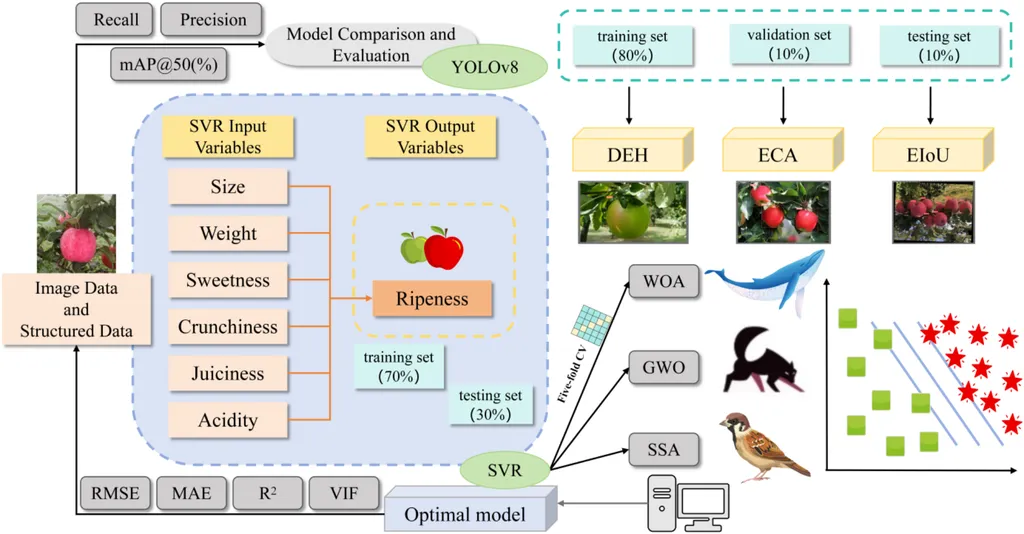In the quest to automate agricultural processes, one of the most challenging tasks has been the precise harvesting of fruits, particularly apples, which come in various colors and are often obscured by leaves or uneven lighting in orchards. A recent study published in *Artificial Intelligence in Agriculture* tackles this very problem, proposing improved versions of the YOLOv8 model to enhance the segmentation and 3D localization of multi-colored apples. This breakthrough could significantly boost the efficiency and accuracy of robotic harvesting systems, a boon for the agriculture sector.
The research, led by Jiaren Zhou from the Key Lab of Smart Agriculture Systems at China Agricultural University, collected a dataset of 5,171 images featuring apples in three colors—red, green, and yellow—from two different locations. This diverse dataset was used to train and test four enhanced YOLOv8-based models: RA-YOLO, GA-YOLO, YA-YOLO, and MCA-YOLO. Each model was designed to address specific challenges in apple segmentation.
RA-YOLO, for instance, integrates the GD mechanism and EMBConv structure based on EfficientNet’s MBConv, while GA-YOLO replaces standard convolutions with dynamic serpentine convolution and adds a P6 layer for detecting larger objects. YA-YOLO employs deformable convolution (DCNv2) and introduces a new attention mechanism called MPCA. The MCA-YOLO model combines the strengths of the other three models, incorporating the P6 layer, DCNv2, and EMBConv structure.
The results were impressive. RA-YOLO, GA-YOLO, and YA-YOLO achieved mean average precision (mAP) values of 95.2%, 96.4%, and 95.4%, respectively, for single-colored apple instance segmentation, outperforming baseline models and existing literature. MCA-YOLO, the most comprehensive model, achieved mAP values of 95.6%, 96.6%, and 94.6% for single-colored apples and 95.6% for mixed multi-colored apples.
“These models not only improve the accuracy of apple segmentation but also enhance the robustness of the system under complex orchard conditions,” said Zhou. “This is a significant step forward in making robotic harvesting more practical and efficient.”
The study also developed a high-precision 3D localization and shaping pipeline, achieving an average localization error of 2.636 mm and a shaping error of 0.768 mm. This level of precision is crucial for optimizing apple harvesting, as it enables millimeter-level localization and sub-millimeter-level shaping.
The commercial implications of this research are substantial. As the agriculture sector increasingly turns to automation to address labor shortages and improve efficiency, the ability to accurately segment and localize fruits in complex environments is a game-changer. Robotic harvesting systems equipped with these improved models can reduce waste, lower costs, and increase yield, ultimately benefiting both farmers and consumers.
Looking ahead, this research could pave the way for further advancements in agricultural robotics. The models developed here could be adapted for other fruits and crops, expanding the scope of automated harvesting. Additionally, the integration of these models with other technologies, such as drones and autonomous vehicles, could create even more sophisticated and efficient farming systems.
As Jiaren Zhou and colleagues continue to refine these models and explore new applications, the future of agricultural automation looks brighter than ever. This study, published in *Artificial Intelligence in Agriculture*, represents a significant milestone in the ongoing effort to revolutionize the way we farm, making the process more efficient, sustainable, and technologically advanced.

